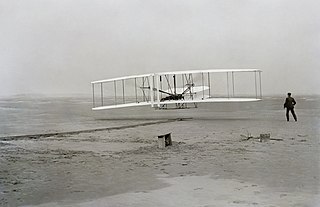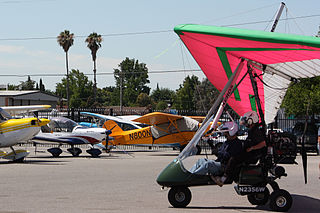
The AEG G.V was a biplane bomber aircraft of World War I, a further refinement of the AEG G.IV. The type saw limited production before the Armistice, and never entered operational service. It featured a 600 kg (1,320 lb) bombload.

The Kyūshū Q1WTokai, was a land-based anti-submarine patrol bomber aircraft developed for the Imperial Japanese Navy in World War II. The Allied reporting name was Lorna. Although similar in appearance to the German Junkers Ju 88 medium bomber, the Q1W was a much smaller aircraft with significantly different design details.

The SAI KZ III Laerke was a Danish light utility aircraft used by the Danish Air Ambulance Service and Danish Air Force.

The Piaggio PD.808 was an Italian business jet built by Piaggio. It was designed as a joint venture between Piaggio and Douglas Aircraft Company of Long Beach, California, United States.

The Focke-Wulf A 20 Habicht was an airliner developed in Germany in the late 1920s. It was a high-wing cantilever monoplane with fixed tailskid undercarriage. The fuselage was deep and seated four passengers in a fully enclosed cabin. The type was not bought by the airlines and only a few examples were built.

The Sikorsky S-10 was a Russian Empiren military twin-float seaplane that served with the Baltic Fleet from the summer of 1913 to 1915. After Igor Sikorsky built the successful Sikorsky S-6 for the Russian military, he tried to build another successful aircraft for them. The S-10 was a modified S-6B built by the Russo-Baltic Carriage Factory. Approximately sixteen production versions of the S-10 were built. It had a less powerful engine and generally weaker structure than the S-6. They had either an 80 HP Gnome Monosoupape or a 100 HP Argus Motoren engine. Some were deployed on the world's first operational seaplane carriers.
The Renard R.17 was a Belgian four-seat cabin monoplane designed and built by Constructions Aéronautiques G. Renard. The high cantilever wing was an unusual feature when most contemporary aircraft still had braced wings. Designed as a high-speed transport for fresh flowers, no aircraft were ordered and the only R.17 was retained by the company until 1946.
The Fisher Barnstormer is a single-seat tricycle landing gear, reverse-staggered biplane ultralight aircraft designed by Michael Fisher and introduced in mid-1982.
The Fisher Boomerang is a single-seat conventional landing gear, high-winged monoplane ultralight aircraft designed by Michael Fisher and introduced in mid-1982.
The HB-Flugtechnik HB-208 Amigo is an Austrian ultralight aircraft that was designed by Heino Brditschka and produced by HB-Flugtechnik of Ansfelden. The aircraft is supplied as a kit for amateur construction or as a complete ready-to-fly-aircraft.
The Air Creation Skypper is a French ultralight trike, designed and produced by Air Creation of Aubenas. The aircraft was introduced in 2011 and is supplied complete and ready-to-fly.
The DTA Voyageur is a French ultralight trike, designed by Jean-Michel Dizier and produced by DTA sarl of Montélimar. The aircraft is supplied complete and ready-to-fly.
The Quander Airpfeil is a German ultralight trike that was designed and produced by UL Flugzeugbau Quander of Petershagen. The aircraft is supplied complete and ready to fly.
The Skyrider Stingray is a German ultralight trike, designed and produced by Skyrider Flugschule. The aircraft is supplied as a complete ready-to-fly-aircraft.
The GS-600 Arrow is a Colombian homebuilt aircraft that was designed and produced by Ibis Aircraft of Cali, introduced in 2000. When the aircraft was available it was supplied as a complete ready-to-fly-aircraft or as a kit for amateur construction.
The Ibis GS-750 Grand Magic is a Colombian homebuilt aircraft, designed and produced by Ibis Aircraft of Cali, introduced in 2006. The aircraft is supplied as a complete ready-to-fly-aircraft or as a kit for amateur construction.
The Ibis GS-730 Super Magic is a Colombian STOL homebuilt aircraft that was designed and produced by Ibis Aircraft of Cali, introduced in 2007. When it was available the aircraft was supplied as a complete ready-to-fly-aircraft or as a kit for amateur construction.
The Adventure Wheely II is a French powered parachute that was designed and produced by Adventure SA of Paris. Now out of production, when it was available the aircraft was supplied as a complete ready-to-fly-aircraft.
The Air Sylphe Bi 582 is a French powered parachute that was designed and produced by Air Sylphe of Villereau, Nord. Now out of production, when it was available the aircraft was supplied as a complete ready-to-fly-aircraft.
The Trixy Trixformer is an Austrian roadable aircraft autogyro/electric motorcycle designed and produced by Trixy Aviation Products of Dornbirn, introduced in 2014. The vehicle is supplied complete and ready-to-fly.








